
It looks pretty in autumn, and provides a home for wildlife. What, then, has conservationist Roger Hart got against bracken? Well it's steadily taking over entire hillsides, and swamping the access routes to crags... and then there are the ticks. Bracken is almost impossible to kill; so why is this pest of a plant so successful, and what can be done about it?
It's some time in the early 90s and I'm staring forlornly at a three wheeled pick up truck. My fourth wheel has disappeared into a hole subsiding into one of the old coal mines below. The reason for my predicament is the purpose of my visit. Hitched on the back is a bizarre contraption: part roller, part flail, which has been purpose built for my boss (who has wisely absented himself from the scene) in order to rid one of the last remaining fragments of Sherwood Forest of its biggest enemy. Not the Sherriff of Nottingham. Bracken.
"A large expanse of bracken can often be one single plant, which has spread via a network of thick underground roots, or rhizomes. These help the plant move into new areas, and also provide an energy source for bracken to grow from. This means that if you knock it down, it gets back up again."
About a fortnight ago, in the heart of the Peak, there's a familiar smell, one that seems to have haunted me half my life. It's bracken. Somewhere in this green jungle I've left a rain gauge. I know it's here because four months ago I'd been up to check it, but the bracken that was just peeping out then has been growing, and now it's up to my chest. At least here there aren't any ticks. A similar job in Cumbria had left me prising them out with a tyre iron. Half an hour later I've found it. Six feet from where I was standing earlier, and full of rotting bracken.
There's a lot to be admired about this stubborn little plant. It's made itself at home on every continent in the world except Antarctica, and I wouldn't bet on that still being the case in fifty years time. It grows in places nothing else will; I can only think of a handful of ways to kill it, and none of those is a certainty. The toxicity of bracken means few animals will eat it, and those that try will eventually become ill, so throwing grazing animals at it is rarely the answer. It's home to a variety of moths and butterflies and provides valuable cover for bird species, including ring ouzel. We have used it for fuel, shelter and animal bedding. So why does it raise the hackles of so many hillwalkers and climbers, myself included?
Well if you've ever tried to follow a bracken-choked hill path, or struggled to find your crag among head-high acres of the stuff, you'll know where I'm coming from. And then of course there are the ticks, and the associated risk of lymes disease...
"There's a lot to be admired about this stubborn plant. It's made itself at home on every continent in the world except Antarctica. It grows in places nothing else will; I can only think of a handful of ways to kill it, and none of those is a certainty"
Let's try another anecdote. My wife is sitting in the Doctors surgery on an unrelated matter, but at the end the doc says " I can't help but notice the bruising on your legs. Is there anything you'd like to tell me?" It was Rhinog Fawr, wading through bracken hiding some of the nastiest roughest scree in North Wales. Bracken covers the ground in a welcoming green carpet, but somewhere underneath the teeth of the mountains still remain, and they'd given us a sound mauling. It's a lovely mountain, away from the madding crowds of Snowdonia, but you pay a price in blood. We all do. I spent that evening picking ticks off the dog and then inspecting my own warm crevices for uninvited passengers.
Ticked off
Ticks love bracken. It provides a warm safe environment away from harsh extremes of temperature and humidity, and it provides convenient cover from which they can drop onto unsuspecting hosts. But here lies an obstacle in the war on bracken: it isn't one of those nasty non-native plants that have invaded from exotic habitats, it's always been here and it does have some ecological benefits. The reason the ticks are there, is not just on the off chance a careless hillwalker ambles by: bracken provides cover for all sorts of animals and their young - deer in particular. In bracken, you might be only a couple of feet from young deer and their mother, lying up in the day. But they are so well protected that they are all but invisible. So the bracken on many upland areas and heathland all contain deer, and with deer come the ticks.
Land managers aren't keen on bracken, however they aren't always keen on dealing with it either. The issues are complex, but mostly boil down to the fact that bracken is very easy to encourage onto your land, and very difficult to eradicate once established. For an understanding of its tenacity, you need to understand the plant. And once you understand it, it's hard not to have some grudging admiration.
Know your enemy
Bracken spreads in one of two ways. It will seed into open ground from the spores it offers to the wind in late summer. It's fast growing, and will establish in very harsh conditions. One of the problems of the uplands is that the growing season is shorter and slower than it is in the valleys. So if you damage the ground cover by excavation, by overgrazing or by burning, you are inviting bracken to come and stay. And like your couch surfing degenerate mate from uni, once it's in, it's next to impossible to evict.
Historically farmers and shooting interests have wanted to maximise returns from the land they manage. Bracken is a major obstacle to this profitability so you would think it's in their interest to keep the foe at bay. But as with so much in the uplands, the situation on the ground is a story of conflict, misunderstanding and short term gains over long term sustainability. Heather is burned to promote grouse supporting new growth heather. The many problems with grouse moor management are well documented elsewhere, but burning old heather is a real issue, and burning done badly almost always leads to bare ground and bracken incursion. Burning is supposed to be a brief affair but if you don't have enough staff supervising, or you're just careless, fires can burn hotter and deeper killing the vegetation on the surface. Erosion and harsh weather do the rest, preventing the heather and the cotton grass re-establishing but allowing the opportunistic bracken in.
"Burning old heather is a real issue, and burning done badly almost always leads to bare ground and bracken incursion"
The other way bracken can spread into an area is from adjacent existing plants. Or should that be plant, singular? Often if you are looking at a large expanse of bracken, you are only looking at a single plant, which has spread via a network of thick underground roots, or rhizomes. These rhizomes help the plant to move into new areas, but also provide an energy source for bracken to grow from. This means that if you knock it down, it gets back up again.
Keeping a lid on it - or not
To control bracken, you need to do something about those rhizomes. One way is to physically stop them. In small areas, deep piling or ditches will prevent those roots spreading - locking them out with a physical barrier. This can work if you are trying to protect a rare plant or fragment of habitat, but it's expensive and impractical for big areas.
Or you try to take some of that energy out of those roots. Cutting, rolling, crushing will all kill that immediate stem, but look closer, down at the ground level. Each bracken stem has a little node at the bottom - the makings of a new stem ready to replace the one you just crushed. The idea, then, is to keep draining that energy source in the rhizomes. So you roll again and again, and again… For years if necessary. It will have an effect eventually, but it takes a lot of effort and it costs. And rolling in remote rocky areas is next to impossible, and even in more accessible areas it's tricky. That's how I wound up with my Nissan in a sink hole!
"I'd love to say there was an easy answer, a magic bullet, but so far there's no sign of one"
Some people have tried making money from bracken. Biomass is biomass, but whilst it's easy to harvest it with equipment usually used for sileage, once you leave the lowlands, it becomes next to impossible to harvest without destroying your equipment in the process. Let's face it, bracken doesn't always grow in convenient and accessible places.
So most people eventually reach for the chemicals - and fortunately there is one for the job. Asulam is a reasonably specific herbicide. Not perfect. If you have ferns in amongst you bracken, it will kill those too and spraying any herbicide has access and ecological implications, but it does the job if you keep at it. But that means big spraying machines or often helicopters. That's expensive and often unpopular with your visitors. There are many issues with the agrochemical industry, some unfounded, but there is a visceral opposition to seeing helicopters spraying a much loved beauty spot, regardless of the objective risks. Did I mention it was expensive?
Much upland management is marginal at best, and if you are managing for ecological or aesthetic reasons, the temptation is just to live with it. There are grants to help, but they are often insufficient, or difficult to access, and bracken control is just one of many competing interests for a dwindling pot of money so you need to be pretty much committed to the work regardless. Fine if you are the National Trust, less so if you are a struggling hill farmer.
How about if the land isn't yours? If you look at some uplands, like the Lakes, or the Shropshire Hills, the graziers don't own or rent the land, they merely have rights to graze it, and often several people will have rights to the same land. There's often no real incentive to manage the land sustainably, because your neighbour won't. So in go the sheep, and soon there's bare ground, and then in comes the bracken. The bracken reduces the amount of land available to graze, increasing the damage to remaining areas and the cycle continues. The original example of The Tragedy of the Commons.
And so the bracken remains. By all means have a bash at it on your way down off the hill, you'll be helping to keep the path open. But don't fool yourself that it's not going to be back next year. It's tougher than that. And you might want to consider all those spores you are kicking up. There is increasing evidence to suggest bracken spores are linked with stomach and throat cancers, although that doesn't stop the Japanese eating the young fronds as a delicacy.
I'd love to say there was an easy answer, a magic bullet, but so far there's no sign of one, and in any event, who knows what new invasive plant is waiting in the wings to fill that niche if we were to succeed?
About Roger Hart
Roger Hart is an occasional lecturer and researcher in peatland hydro-ecology. He has worked as Estate Manager for Nottinghamshire Wildlife Trust and is still an active volunteer with them. In his secret online identity as Toad he is a bimbly low grade climber, hill walker and infrequent mountaineer. He has also been seen out and about in an open canoe with a large golden retriever.



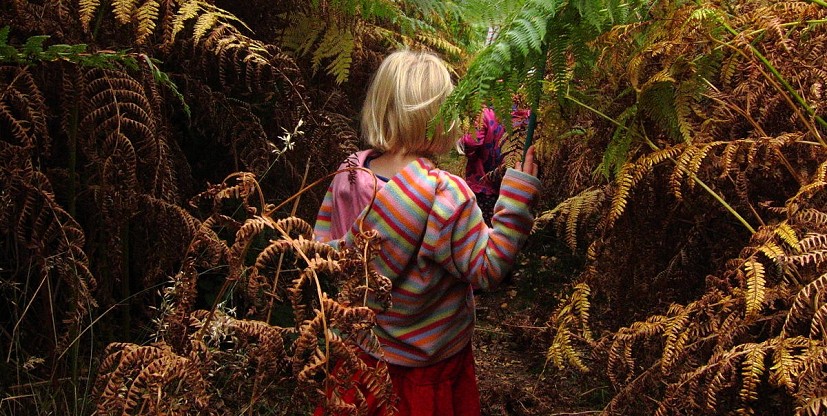

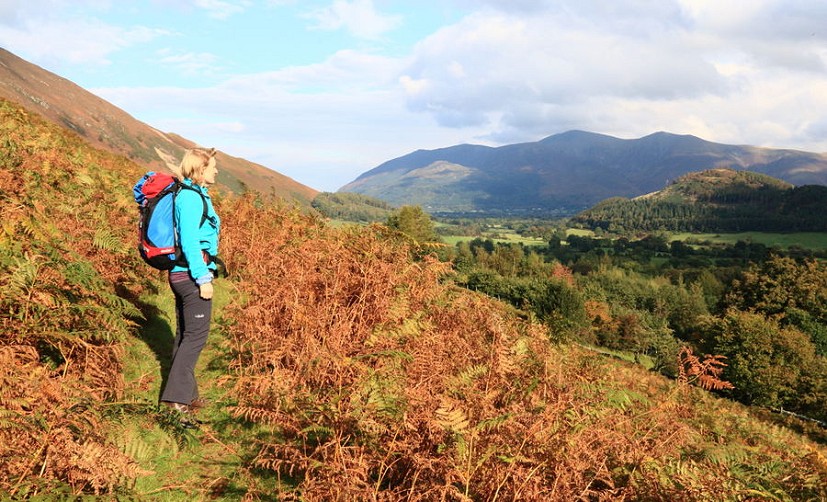
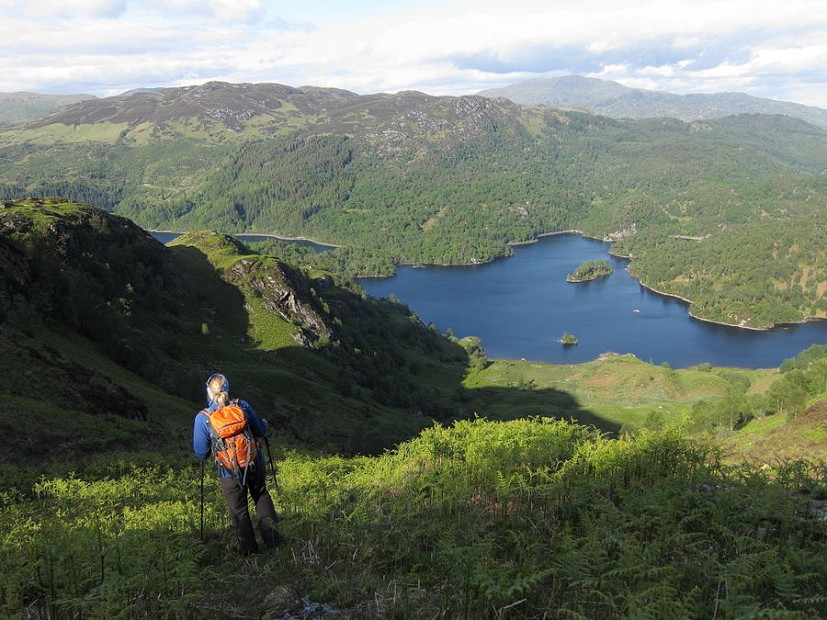
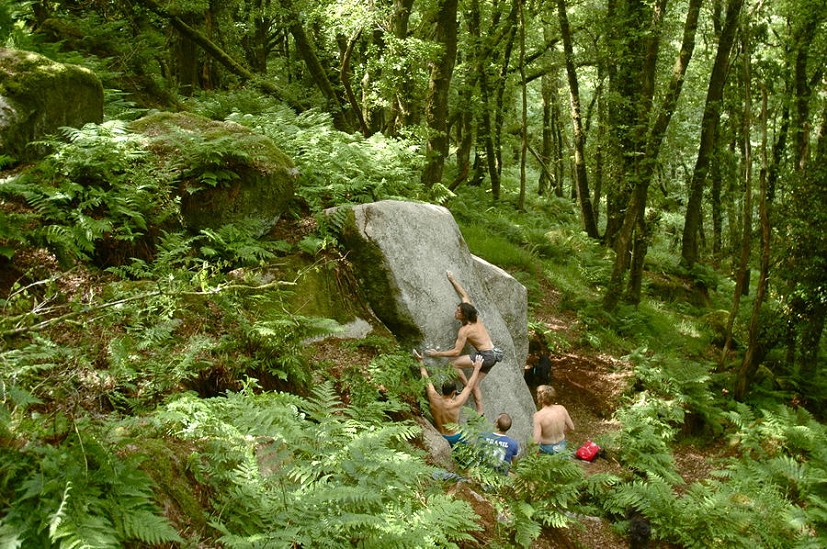
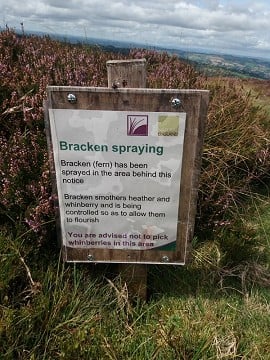




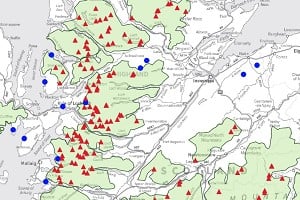









Comments